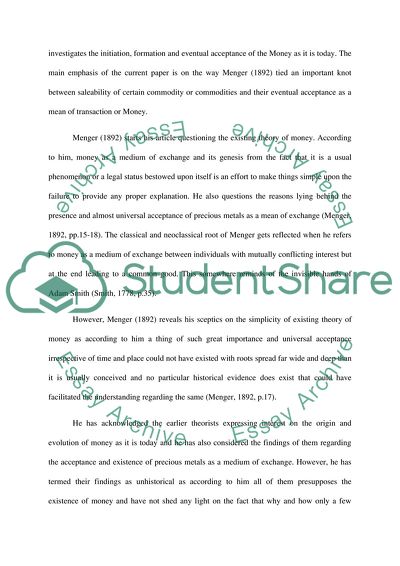Cite this document
(Menger on the origins of money Term Paper Example | Topics and Well Written Essays - 3000 words, n.d.)
Menger on the origins of money Term Paper Example | Topics and Well Written Essays - 3000 words. https://studentshare.org/macro-microeconomics/1816126-menger-on-the-origins-of-money
Menger on the origins of money Term Paper Example | Topics and Well Written Essays - 3000 words. https://studentshare.org/macro-microeconomics/1816126-menger-on-the-origins-of-money
(Menger on the Origins of Money Term Paper Example | Topics and Well Written Essays - 3000 Words)
Menger on the Origins of Money Term Paper Example | Topics and Well Written Essays - 3000 Words. https://studentshare.org/macro-microeconomics/1816126-menger-on-the-origins-of-money.
Menger on the Origins of Money Term Paper Example | Topics and Well Written Essays - 3000 Words. https://studentshare.org/macro-microeconomics/1816126-menger-on-the-origins-of-money.
“Menger on the Origins of Money Term Paper Example | Topics and Well Written Essays - 3000 Words”. https://studentshare.org/macro-microeconomics/1816126-menger-on-the-origins-of-money.


